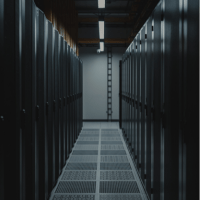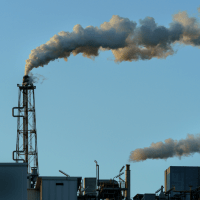In an era of digital dependence, data centers have become the backbone of our connected world. However, their voracious appetite for energy has raised significant environmental concerns. There’s now a critical shift toward sustainable practices within data centers to reshape the future, one server at a time.
Sustainable data centers help lower carbon emissions with eco-friendly materials and reduce energy consumption. There are a variety of metrics for measuring data center efficiency and performance. We focus on specific metrics for a sustainable approach to both environmental responsibility and cost-effectiveness.
Why Does Data Center Sustainability Matter?
Data center sustainability matters for two critical reasons:
- Environmental impact
- Economic efficiency
Let’s start by discussing the environmental impact. Data centers consume massive amounts of energy for operations and cooling. Unsustainable practices contribute to carbon emissions, accelerating climate change. Adopting green technologies, like renewable energy sources and efficient cooling systems, helps to reduce this footprint.
Sustainability leads to economic efficiency. Energy-efficient data centers benefit both businesses and consumers by reducing operational costs. What’s more, companies with sustainable data centers gain a competitive edge as the world shifts towards environmentally responsible practices. They attract environmentally-conscious customers and investors and are more likely to comply with future regulations, avoiding possible penalties.
Overall, prioritizing data center sustainability aligns with global efforts to:
- Combat climate change
- Reduce environmental harm
- Improve the bottom line of businesses
Data centers used up to 2% of the world’s energy consumption in 2020. Implementing data center sustainability now is a vital step towards a greener, more economically sound future.
Learn how climate change is affecting data centers.
 What is a Sustainable Data Center?
What is a Sustainable Data Center?
Data center sustainability is a growing concern on a global level. Fortunately, sustainable data centers can offset carbon emissions as well as save your business money. A sustainable data center is a facility designed and operated with a focus on minimizing its environmental impact.
Despite being more energy efficient, it can still handle data storage, management, and dissemination based on its data center tier. These centers contribute to long-term environmental sustainability by:
- Reducing energy consumption
- Using eco-friendly materials
- Adopting practices that contribute to long-term environmental sustainability
Data center sustainability may also improve your business in other ways. For instance, brands that focus on sustainability are seen as more innovative and resilient which can attract new customers as well as talent. Just be sure that you’re not greenwashing—a deceptive marketing practice in which a company falsely presents itself as environmentally responsible or sustainable to attract environmentally conscious consumers.
There are limitations to sustainable data centers. A prime example is that most don’t have the infrastructure to run solely on renewable energy sources. More importantly, it’s not clear if all of them could, even with the necessary updates.
This doesn’t mean that the industry shouldn’t be making moves to improve efficiency for environmental and financial reasons. To that end, we kept this at the front of our minds with our purpose-built facility.
Learn how the right data center can boost ROI, reduce costs, and promote sustainability.
Measuring Data Center Energy Efficiency
Data center energy efficiency is the ability to maximize computational output while reducing energy consumption. This is crucial to data center sustainability because they house numerous servers and IT equipment that require substantial power to operate.
Efficiency measures can include:
- Advancements in cooling systems
- Server virtualization
- Utilization optimization
Employing efficient hardware, such as energy-efficient processors and power supplies, is also vital. Additionally, implementing technologies like hot/cold aisle containment and using renewable energy sources can further enhance efficiency.
Power Usage Effectiveness (PUE) is a common metric used to evaluate data center efficiency. It quantifies how much of the energy consumed by a data center is actually used for computing tasks, as opposed to overhead activities like cooling and lighting. The ideal PUE is 1.0, indicating all energy is directed towards computing.
Data Center Infrastructure Efficiency (DCIE) is another useful metric. It measures how well a data center uses power for IT operations versus non-IT functions like cooling and lighting. It’s expressed as a ratio, with higher values indicating better efficiency. DCIE helps assess the energy performance of a data center, highlighting opportunities for optimization and cost reduction.
Data center sustainability metrics like PUE and DCIE aren’t something that you can control as a data center customer. This means that you need to partner with a data center that’s already committed to improving its data center energy efficiency.
 Meeting Environmental, Social, and Governance Goals
Meeting Environmental, Social, and Governance Goals
Environmental, Social, and Governance (ESG) goals represent a framework for evaluating a company’s performance and impact in three key areas.
- Environmental goals center on the environmental footprint, addressing concerns like carbon emissions, water usage, and waste management
- Social goals involve a company’s interactions with its stakeholders, including employees, communities, and society at large.
- Governance goals pertain to the company’s internal operations and leadership structure. It keeps standards of corporate ethics, transparency, and accountability
ESG goals can go a long way in limiting your organization’s carbon footprint. However, you need to seriously consider the energy cost of your data hosting if you’re truly committed to doing as much as possible. Otherwise, you’re taking an out-of-sight, out-of-mind approach to the environmental impact of your organization.
How to Choose a Sustainable Data Center
Choosing a data center can be difficult enough without taking data center sustainability into consideration. Fortunately, there are a few essential questions you can ask to narrow down your search.
They include:
- What is your PUE rating?
- The lower their PUE, the more efficient their data center is.
- What percentage of their energy comes from renewable sources?
- This helps determine how sustainable their data center actually is. Although 100% isn’t always realistic, the higher the percentage the better.
- What measures do they have in place to reduce water consumption?
- Sustainable data centers often implement water-saving technologies due to the significant amounts used by their cooling systems.
- How is waste managed and disposed of?
- Look for data centers that have robust recycling and waste management programs in place.
The importance of data centers in our modern age can’t be overstated. But some organizations may want to go beyond functionality and take sustainability into consideration. If that’s something your organization is interested in then these questions should help you get started.
Partnering with TenHats
In the competitive landscape of data center sustainability, TenHats shines as a beacon of:
- Sustainability
- Cost-effectiveness
- ROI optimization
By leveraging state-of-the-art technologies and innovative strategies, we minimize environmental impacts while maximizing cost savings. We lead the industry with advanced cooling systems, employing cutting-edge evaporative techniques and meticulous airflow management. This results in a substantial reduction in energy consumption, ensuring operations are both efficient and environmentally responsible.
The adoption of renewable energy sources is a hallmark of TenHats’ commitment to sustainability. Solar, wind, and hydroelectric power fuel our operations, drastically reducing carbon emissions and setting a new standard for eco-conscious data centers worldwide.
We place a strong emphasis on resource efficiency through rigorous recycling and waste reduction programs. Advanced monitoring tools further enhance energy conservation, driving down operational costs.
By combining environmental stewardship with innovative technology, TenHats stands as your prime choice for a sustainable data center. Our forward-thinking approach not only benefits the planet but also ensures a high ROI for your businesses.
Are you ready to choose the sustainable option without sacrificing ROI? Contact us today for a free quote!
Elevated energy usage and carbon emissions are the consequences of inefficient data center practices. By employing eco-friendly materials and minimizing energy consumption, sustainable data centers effectively counteract this issue. A data center’s effectiveness and operation are assessed using a diverse range of metrics. TenHats’ sustainable strategy not only guarantees environmental stewardship but also ensures economic efficiency.
Located in Knoxville, TN, our purpose-built colocation data center can serve any organization in East Tennessee and beyond. With our team’s IT experience, we provide a lot more than simply protected data. When you call us, you talk to a real IT expert. Connect with our team about our data center today!


